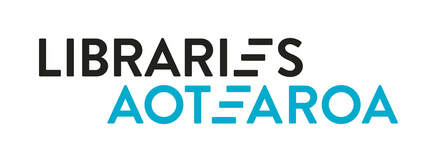The school library collection is a complex balancing act. It provides a diverse and inclusive collection for their students, acting in loco parentis to keep students safe from harm, adhering to libraries core ethic of freedom of access to information and intellectual freedom, and meeting the needs of the school, its curriculum, and the school’s ethos. All these perspectives could present different ideas and competing priorities about what belongs in the library’s collection. Amidst this is the eternal question of what ‘appropriate’ means, who gets to determine what is appropriate and for whom.
The School Library Journal Controversial Books Survey (2016) found that ‘not age appropriate’ was the top reason why school librarians self-censored books, followed by concerns about the reaction from parents or the school. Their sample showed that 9 in 10 primary school librarians, and 73% of high school librarians passed on purchasing a book because of potentially controversial topics. Self-censorship has an almost insidious, shameful tone in our industry. In reality librarians carry out self-censorship for a variety of reasons other than just their own views on the information. Reasons include fear of controversy, concern about the appropriateness of the content, budget and space constraints, or external pressure from teachers, parents, community groups, or school leadership.
The School Journal study also found that school librarians reported an increase in teen and young adult content which was “graphic” or “explicit”, particularly in relation to sexual or violent content. This plays out in the contemporary context of young people’s exposure to such content online. Young people have access to this type of unregulated online content, whether school librarians like it or not. Meanwhile, literature serves as a tool to reflect a young person’s cultural and lived experience, enabling them to learn about themselves through reflection and identification. Libraries can deliver this content in a safe and trusted setting, with professionals on hand to answer questions or facilitate conversations about the material.
Librarian Emily Calkins argues that librarians should protect teens’ individual right to intellectual freedom due to the significant developmental changes that teenagers undergo between ages 12 and 18 years. The process of finding autonomy, independence, forming their own ideas and individuating from their guardians are hallmarks of this phase, she says. Calkins advocates to facilitate and allow young people’s information discovery journey on their own terms, with less of a focus on guardian involvement than we would for children.
Robust and up-to-date collection policies are librarians’ solutions to making tricky decisions about what is in their collection. If your school library doesn’t have collection policies, it’s time to create them! The National Library’s Services to School website has extensive resources on collection management to assist you. They recommend a wide range of high-quality resources that enable students to develop information skills, foster critical thinking, and extend their interest and knowledge of the world and their place in it.
In general, your collection management policy should cover the strategy and vision for developing the library, aligned with that of the school, the process and guidelines for selecting resources, how to manage donations, procedures for weeding/ de-selection, how to handle complaints about resources, and any various statements you’re committed to, such as copyright, privacy, and intellectual freedom. Your policy will help you make decisions about the collection, and advocate when items are questioned. Having a robust complaints procedure in place is essential to being prepared for managing complaints and being able to justify your decisions.
School libraries do make decisions about what does and does not go into the collection, so what’s the difference between self-censorship and selection? Perhaps the answer is that selection occurs in consultation within a professionally informed collection management policy, and self-censorship occurs in absentia of a policy, or without consulting the policy to guide the decision.
Censorship and access are on a sliding scale and school librarians can make choices about access to strike a balance if their various priorities are conflicting. For example, you could keep something in a Year 13-only section, put a content warning sticker on a book, or keep the book behind the desk, meaning the librarian can have a conversation about it. Lastly, we invite school libraries to involve the students in the process of determining your collection.
Consider running an anonymous survey, questionnaire, or feedback box to discover what students want in their library collections. Giving the students input into their library increases their engagement and makes them feel considered and respected.
This column was written by Marlies Zyp-van der Laan RLIANZA, Team Leader Online Researcher Services at Auckland Libraries. Marlies is a member of the LIANZA Standing Committee on Freedom of Information.



 RSS Feed
RSS Feed